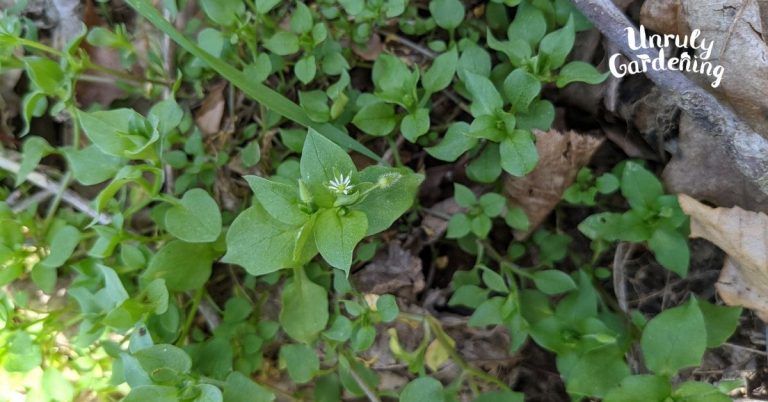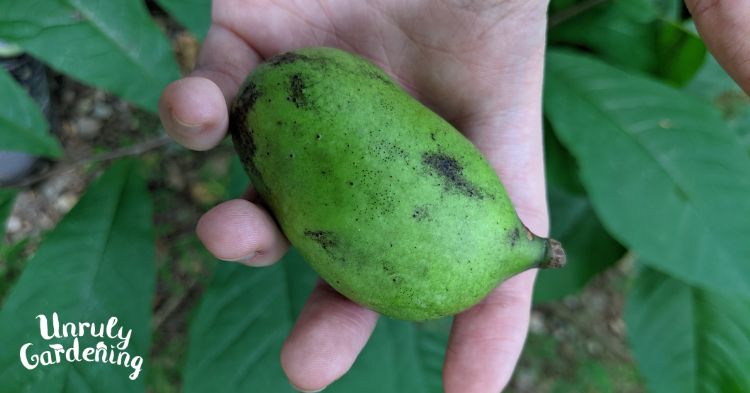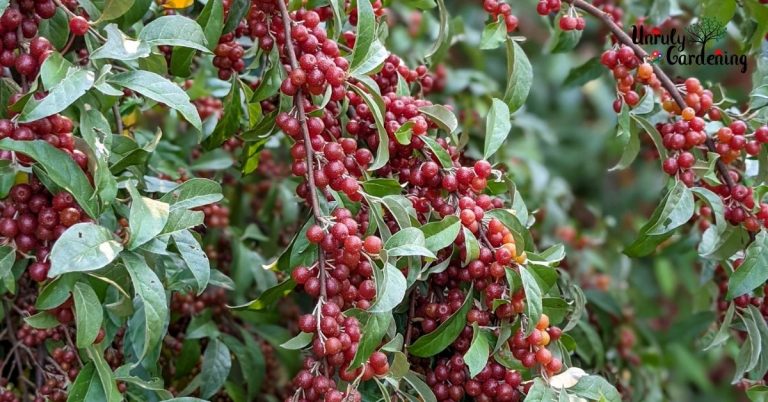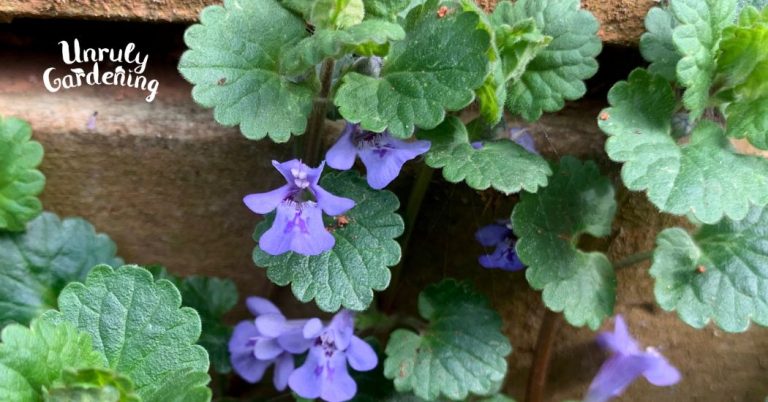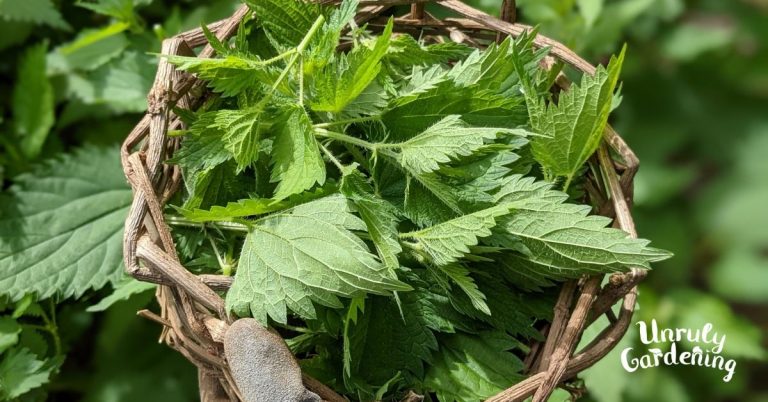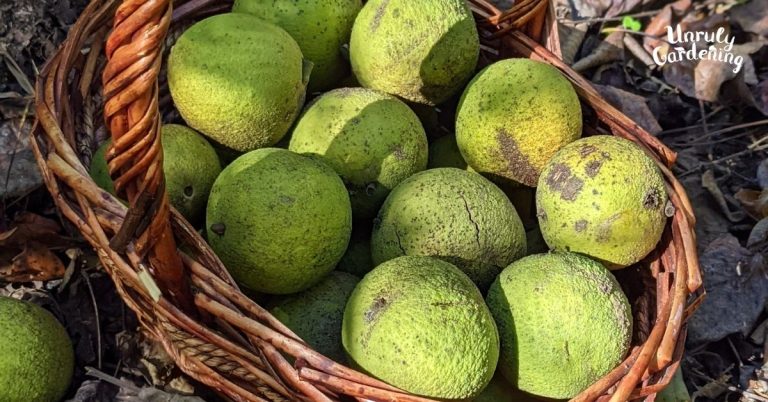Identifying Jack O’ Lantern Mushrooms
Being able to identify Jack O’ Lantern mushrooms is an essential skill for mushroom foragers!
This is especially useful when hunting for chanterelles, or other orange mushrooms, such as chicken of the woods.
In this article, I’m sharing photos and tips to help you better tell the difference between toxic Jack O’ Lanterns (Omphalotus illudens), and desirable lookalikes such as chanterelle mushrooms.


Where Jack O’ Lantern Mushrooms Grow
These mushrooms are saprobic; they live on dead or decaying wood.
You’ll find them growing in clusters from dead hardwood tree stumps or snags. This could be anywhere from the middle of a mature forest, or at the edge of your suburban backyard. Wherever there are hardwood trees around, a jack-o-lantern mushroom can grow.

Beware of buried wood!
Sometimes that decaying wood is buried root, so if you’re unsure if you have a jack-o-lantern (also called “jacks”), be sure to use a nearby stick or rock to dig underneath the mushroom and check if it’s attached to a tree root.
In this photo below, the jack looks like it’s growing all by itself and right out of the ground, but when I dug into the earth a bit, I could feel a clearly defined tree root that the mushroom was growing from.

Is it poisonous to touch Jack o’ lantern mushrooms?
You have to actually eat jacks in order for them to make you sick.
It’s okay to pick them up and handle them to get a good look, you won’t get poisoned through your skin if you touch one.
Jack o’ lantern mushrooms help serve an important role in the ecosystem, so if you find some, it’s usually best to just leave them in place and let them do their thing. However, if there’s any concern your puppy or toddler would eat one, then definitely remove from areas that your puppies or toddlers frequent.

Identifying Features
Once you find some actual Jack o’ Lanterns in the woods, then you’re unlikely to ever mix them up again. However, until that time – here are some features to look for.
Color of the Cap
Jack-o-lantern mushrooms are distinctly orange; they’re often described as pumpkin colored. (Which very likely explains their name!)

Inside Stem
An important feature to check is the stem.
The outside of the stem should be about the same orange color as the cap, and if you split the stem open, the flesh inside is also orange.

(In contrast, chanterelle stems are white inside and look like string cheese when you tear them open.)
The stems also tend to taper or curve to the base. And you’ll usually see more than one jack growing together in a big cluster or grouping.

Gills
The thin gills are the same orange color as the rest of the mushroom.

You can double check if your mushroom has gills by cutting a crosspiece from the cap and observing it.
Here’s a photo of a bite taken out of jack-o-lantern mushroom. (Not by a human! Some critters can eat these just fine.)

Notice the sharp lines of the gills are even more evident this way.
Chanterelles do not have gills or sharp lines like this. See the comparison section below.
Spore Print
The spore print is off-white. To make a spore print, cut the stem from a cap and lay it gill side down on a piece of aluminum foil.
Place a glass or bowl over the mushroom and keep it undisturbed all night. The next morning, carefully remove the glass/bowl and the mushroom cap and check out your lovely spore print!

Time of Year to Find Jacks
Jacks are most often found from mid-summer to late fall, but they can appear earlier in the year as well.
I find them mostly in August, September, and October around where we live.

Do Jack O’ Lanterns REALLY Glow in the Dark??
It’s often said that Jacks glow in the dark.
However, it’s not a super bright thing like the glow in the dark stars your mom stuck on your ceiling when you were a kid, or your favorite glow in the dark stickers. Putting jack-o-lantern mushrooms under a bright light for a while isn’t going to make them extra glowy.
Instead, you have to take a fresh sample into the darkest room in your house. Then wait, and wait, and wait. Eventually, your eyes will adjust and you *might* see a very dim, greenish glow!
I’ve done this a few times and have seen the ultra pale glow only once after a very long time of waiting. After reading Mushroom Expert’s opinion on the glow, now I’m not even sure I saw what I saw, or if my eyes played tricks on me!
If you give it a try, let me know – did you see a glow, or not?
How to Tell Chanterelles and Jack o’ Lanterns Apart
First, if you haven’t done so, go read my whole article about Foraging Chanterelle Mushrooms.
That article will give you the best in-depth information on the differences.

I give lots of photo examples and ID tips there that are good to know.

Basically, Chanterelles have “false gills” or ridges, while jack o lanterns have noticeable gills.
Jacks also tend to grow in clusters and on wood; while chanterelles are often singles and don’t grow from wood.

(However, to make it more confusing, we have a “fragrant chanterelle”, Craterellus odoratus, growing around here, which also grows in clusters! Upon closer look though, you’ll notice that the flesh of Craterellus odoratus is very thin with vase shaped caps (kind of resembling a black trumpet), it doesn’t have gills, and doesn’t grow on wood.)
The Most Important Thing to Remember
Foraging Rule #1: If you have even the tiniest bit of doubt about a mushroom, plant, etc – don’t eat it!
I would also add as important thing #2, if a friend gives you some “chanterelles” they foraged, you’re still responsible for making sure they indeed gave you the right mushroom. I can’t tell you how many stories I’ve heard about newer foragers accidentally making their friends sick by confusing chanterelles and jacks.
Double check through all of the ID tips above, find out more about how it was collected (from the ground? on a dead tree in grandma’s back yard? in a big cluster? etc), and if you’re not 100% comfortable, don’t eat it.

What happens if you eat jack o’ lantern mushrooms?
The short answer is that you’ll have extreme digestive upset – intense nausea, diarrhea, and vomiting.
Jack o’ lantern mushrooms contain toxic compounds and are not safe to eat.
If you’re a healthy adult, they’re not normally life threatening, you will just feel incredibly miserable for a while after eating them!
Poisoning with jacks is often treated with activated charcoal and IV fluids; be sure to consult qualified medical care if you think you’ve ingested any.

More Mushroom & Foraging Articles
Enjoy foraging mushrooms and other plants? We do too!
Here are some more articles you may enjoy:
(Plus check our “Forage” tab to explore even more plants and mushrooms!)
12 Tips for Foraging Morel Mushrooms
Growing & Foraging for Mullein (Plus Harvesting & Preserving tips!)
Foraging & Using Reishi Mushrooms
Foraging Chanterelle Mushrooms
All About Ghost Pipe (Monotropa uniflora)
Identifying Chicken of the Woods Mushroom
Foraging Usnea Sustainably (+uses & recipes!)
Foraging Goldenrod (Photos, Tips & Lookalikes!)
Our articles are for information and idea-sharing only. While we aim for 100% accuracy, it is solely up to the reader to provide proper identification. Be sure to seek out local foraging classes and plant walks, and invest in mushroom and foraging guides suitable for the area you live in, since some wild foods are poisonous, or may have adverse effect.

